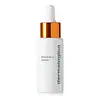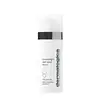What's inside
What's inside
 Key Ingredients
Key Ingredients

 Benefits
Benefits

 Concerns
Concerns

 Ingredients Side-by-side
Ingredients Side-by-side

Water
Skin ConditioningGlycerin
HumectantButylene Glycol
HumectantEthoxydiglycol
HumectantLactic Acid
BufferingSalvia Hispanica Seed Extract
EmollientSodium PCA
HumectantPalmitoyl Tripeptide-5
Skin ConditioningSophora Japonica Flower Extract
Skin ProtectingAscorbyl Methylsilanol Pectinate
AntioxidantSodium Hyaluronate
HumectantTocopherol
AntioxidantDipotassium Glycyrrhizate
HumectantAminopropyl Ascorbyl Phosphate
AntioxidantTrehalose
HumectantPolyacrylate-13
Propanediol
SolventCitrus Grandis Peel Oil
MaskingHelianthus Annuus Seed Oil
EmollientPolyisobutene
Methylpropanediol
SolventCarrageenan
Pentylene Glycol
Skin ConditioningGlyceryl Polyacrylate
Caprylyl Glycol
EmollientEthylhexylglycerin
Skin ConditioningTetrasodium Glutamate Diacetate
Xanthan Gum
EmulsifyingPolysorbate 20
EmulsifyingLimonene
PerfumingSodium Hydroxide
BufferingPhenoxyethanol
PreservativeWater, Glycerin, Butylene Glycol, Ethoxydiglycol, Lactic Acid, Salvia Hispanica Seed Extract, Sodium PCA, Palmitoyl Tripeptide-5, Sophora Japonica Flower Extract, Ascorbyl Methylsilanol Pectinate, Sodium Hyaluronate, Tocopherol, Dipotassium Glycyrrhizate, Aminopropyl Ascorbyl Phosphate, Trehalose, Polyacrylate-13, Propanediol, Citrus Grandis Peel Oil, Helianthus Annuus Seed Oil, Polyisobutene, Methylpropanediol, Carrageenan, Pentylene Glycol, Glyceryl Polyacrylate, Caprylyl Glycol, Ethylhexylglycerin, Tetrasodium Glutamate Diacetate, Xanthan Gum, Polysorbate 20, Limonene, Sodium Hydroxide, Phenoxyethanol
Water
Skin ConditioningEthylhexyl Isononanoate
EmollientTriolein
Skin ConditioningNiacinamide
SmoothingC12-16 Alcohols
Emollient1,2-Hexanediol
Skin ConditioningCoco-Caprylate/Caprate
EmollientLentinus Edodes Mycelium Extract
Skin ConditioningC18-36 Acid Triglyceride
EmollientAcrylates Copolymer
Butylene Glycol
HumectantEctoin
Skin ConditioningPaeonia Suffruticosa Root Extract
Skin ProtectingJojoba Esters
EmollientHydroxyacetophenone
AntioxidantHexylresorcinol
AntimicrobialPhytosteryl Macadamiate
Skin ConditioningSodium Hyaluronate Crosspolymer
HumectantWithania Somnifera Root Extract
Skin ConditioningPhytosterols
Skin ConditioningSodium Levulinate
Skin ConditioningC12-18 Acid Triglyceride
EmollientRaspberry Ketone
MaskingMimosa Tenuiflora Bark Extract
Skin ProtectingVanilla Planifolia Fruit
MaskingIlex Paraguariensis Leaf Extract
PerfumingHelianthus Annuus Seed Oil
EmollientPrunus Amygdalus Dulcis Oil
Skin ConditioningCitrus Aurantium Dulcis Peel Oil
MaskingCitrus Aurantium Bergamia Fruit Oil
MaskingCitrus Medica Peel Oil
Citrus Paradisi Peel Oil
MaskingRicinus Communis Seed Oil
MaskingRosmarinus Officinalis Leaf Extract
AntimicrobialCistus Ladaniferus Resin
MaskingZingiber Officinale Root Oil
MaskingLavandula Angustifolia Oil
MaskingRibes Nigrum Seed Oil
EmollientJasminum Sambac Flower Extract
MaskingCucumis Sativus Seed Oil
EmollientDipteryx Odorata Seed Extract
MaskingStyrax Benzoin Resin Extract
MaskingViola Odorata Leaf Extract
MaskingJuniperus Virginiana Oil
MaskingTitanium Dioxide
Cosmetic ColorantTocopherol
AntioxidantEthylhexylglycerin
Skin ConditioningXanthan Gum
EmulsifyingSclerotium Gum
Emulsion StabilisingHydrogenated Lecithin
EmulsifyingLecithin
EmollientPalmitic Acid
EmollientOctyldecanol
EmollientGlycerin
HumectantOctyldodecyl Oleate
EmollientSqualene
EmollientOctyldodecyl Stearoyl Stearate
EmollientTetrasodium Glutamate Diacetate
Caprylyl Glycol
EmollientBenzyl Glycol
SolventLaureth-21
CleansingPullulan
Silica
AbrasiveAlumina
AbrasiveSodium Hydroxide
BufferingSodium Dehydroacetate
PreservativeSodium Benzoate
MaskingCitral
PerfumingLimonene
PerfumingLinalool
PerfumingWater, Ethylhexyl Isononanoate, Triolein, Niacinamide, C12-16 Alcohols, 1,2-Hexanediol, Coco-Caprylate/Caprate, Lentinus Edodes Mycelium Extract, C18-36 Acid Triglyceride, Acrylates Copolymer, Butylene Glycol, Ectoin, Paeonia Suffruticosa Root Extract, Jojoba Esters, Hydroxyacetophenone, Hexylresorcinol, Phytosteryl Macadamiate, Sodium Hyaluronate Crosspolymer, Withania Somnifera Root Extract, Phytosterols, Sodium Levulinate, C12-18 Acid Triglyceride, Raspberry Ketone, Mimosa Tenuiflora Bark Extract, Vanilla Planifolia Fruit, Ilex Paraguariensis Leaf Extract, Helianthus Annuus Seed Oil, Prunus Amygdalus Dulcis Oil, Citrus Aurantium Dulcis Peel Oil, Citrus Aurantium Bergamia Fruit Oil, Citrus Medica Peel Oil, Citrus Paradisi Peel Oil, Ricinus Communis Seed Oil, Rosmarinus Officinalis Leaf Extract, Cistus Ladaniferus Resin, Zingiber Officinale Root Oil, Lavandula Angustifolia Oil, Ribes Nigrum Seed Oil, Jasminum Sambac Flower Extract, Cucumis Sativus Seed Oil, Dipteryx Odorata Seed Extract, Styrax Benzoin Resin Extract, Viola Odorata Leaf Extract, Juniperus Virginiana Oil, Titanium Dioxide, Tocopherol, Ethylhexylglycerin, Xanthan Gum, Sclerotium Gum, Hydrogenated Lecithin, Lecithin, Palmitic Acid, Octyldecanol, Glycerin, Octyldodecyl Oleate, Squalene, Octyldodecyl Stearoyl Stearate, Tetrasodium Glutamate Diacetate, Caprylyl Glycol, Benzyl Glycol, Laureth-21, Pullulan, Silica, Alumina, Sodium Hydroxide, Sodium Dehydroacetate, Sodium Benzoate, Citral, Limonene, Linalool
 Reviews
Reviews

Ingredients Explained
These ingredients are found in both products.
Ingredients higher up in an ingredient list are typically present in a larger amount.
Butylene Glycol (or BG) is used within cosmetic products for a few different reasons:
Overall, Butylene Glycol is a safe and well-rounded ingredient that works well with other ingredients.
Though this ingredient works well with most skin types, some people with sensitive skin may experience a reaction such as allergic rashes, closed comedones, or itchiness.
Learn more about Butylene GlycolCaprylyl Glycol is a humectant and emollient, meaning it attracts and preserves moisture.
It is a common ingredient in many products, especially those designed to hydrate skin. The primary benefits are retaining moisture, skin softening, and promoting a healthy skin barrier.
Though Caprylyl Glycol is an alcohol derived from fatty acids, it is not the kind that can dry out skin.
This ingredient is also used as a preservative to extend the life of products. It has slight antimicrobial properties.
Learn more about Caprylyl GlycolEthylhexylglycerin (we can't pronounce this either) is commonly used as a preservative and skin softener. It is derived from glyceryl.
You might see Ethylhexylglycerin often paired with other preservatives such as phenoxyethanol. Ethylhexylglycerin has been found to increase the effectiveness of these other preservatives.
Glycerin is already naturally found in your skin. It helps moisturize and protect your skin.
A study from 2016 found glycerin to be more effective as a humectant than AHAs and hyaluronic acid.
As a humectant, it helps the skin stay hydrated by pulling moisture to your skin. The low molecular weight of glycerin allows it to pull moisture into the deeper layers of your skin.
Hydrated skin improves your skin barrier; Your skin barrier helps protect against irritants and bacteria.
Glycerin has also been found to have antimicrobial and antiviral properties. Due to these properties, glycerin is often used in wound and burn treatments.
In cosmetics, glycerin is usually derived from plants such as soybean or palm. However, it can also be sourced from animals, such as tallow or animal fat.
This ingredient is organic, colorless, odorless, and non-toxic.
Glycerin is the name for this ingredient in American English. British English uses Glycerol/Glycerine.
Learn more about GlycerinHelianthus Annuus Seed Oil is the oil derived from the seeds of a Sunflower. Sunflower seed oil is non-fragrant. It is an emollient, meaning it helps to soften the skin.
Sunflower seed oil contains many fatty acids. The fatty acids found in sunflower seeds include (from highest amount to least): linoleic acid, myristic acid, palmitic acid, stearic acid, arachidic acid, oleic acid, and linolenic acid.
These fatty acids help the skin create ceramides. Ceramides play a role in repairing the skin barrier.
Helianthus Annuus Seed Oil helps moisturize the skin. This in turn helps the skin look more rejuvenated and smoother.
Sunflowers are rich in vitamin E.
Historians believe Indigenous cultures of North America domesticated sunflowers before corn. Thus they relied on sunflower oil for a variety of uses. One such use is moisturizing skin and hair.
Sunflower seed oil may not be fungal acne safe. We recommend speaking with a professional if you have any concerns.
Learn more about Helianthus Annuus Seed OilLimonene is a fragrance that adds scent and taste to a formulation.
It's found in the peel oil of citrus fruits and other plants such as lavender and eucalyptus. The scent of limonene is generally described as "sweet citrus".
Limonene acts as an antioxidant, meaning it helps neutralize free radicals.
When exposed to air, oxidized limonene may sensitize the skin. Because of this, limonene is often avoided by people with sensitive skin.
The term 'fragrance' is not regulated in many countries. In many cases, it is up to the brand to define this term. For instance, many brands choose to label themselves as "fragrance-free" because they are not using synthetic fragrances. However, their products may still contain ingredients such as essential oils that are considered a fragrance.
Learn more about LimoneneSodium Hydroxide is also known as lye or caustic soda. It is used to adjust the pH of products; many ingredients require a specific pH to be effective.
In small amounts, sodium hydroxide is considered safe to use. However, large amounts may cause chemical burns due to its high alkaline.
Your skin has a natural pH and acid mantle. This acid mantle helps prevent harmful bacteria from breaking through. The acid mantle also helps keep your skin hydrated.
"Alkaline" refers to a high pH level. A low pH level would be considered acidic.
Learn more about Sodium HydroxideTetrasodium Glutamate Diacetate is a chelating agent. Chelating agents help prevent metal ions from binding to other ingredients. This helps prevent unwanted effects and reactions from a product. These metal ions may come from water and are found in miniscule amounts.
Tetrasodium Glutamate Diacetate can also help other preservatives be more effective.
Tocopherol (also known as Vitamin E) is a common antioxidant used to help protect the skin from free-radicals and strengthen the skin barrier. It's also fat soluble - this means our skin is great at absorbing it.
Vitamin E also helps keep your natural skin lipids healthy. Your lipid skin barrier naturally consists of lipids, ceramides, and fatty acids. Vitamin E offers extra protection for your skin’s lipid barrier, keeping your skin healthy and nourished.
Another benefit is a bit of UV protection. Vitamin E helps reduce the damage caused by UVB rays. (It should not replace your sunscreen). Combining it with Vitamin C can decrease sunburned cells and hyperpigmentation after UV exposure.
You might have noticed Vitamin E + C often paired together. This is because it is great at stabilizing Vitamin C. Using the two together helps increase the effectiveness of both ingredients.
There are often claims that Vitamin E can reduce/prevent scarring, but these claims haven't been confirmed by scientific research.
Learn more about TocopherolWater. It's the most common cosmetic ingredient of all. You'll usually see it at the top of ingredient lists, meaning that it makes up the largest part of the product.
So why is it so popular? Water most often acts as a solvent - this means that it helps dissolve other ingredients into the formulation.
You'll also recognize water as that liquid we all need to stay alive. If you see this, drink a glass of water. Stay hydrated!
Learn more about WaterXanthan gum is used as a stabilizer and thickener within cosmetic products. It helps give products a sticky, thick feeling - preventing them from being too runny.
On the technical side of things, xanthan gum is a polysaccharide - a combination consisting of multiple sugar molecules bonded together.
Xanthan gum is a pretty common and great ingredient. It is a natural, non-toxic, non-irritating ingredient that is also commonly used in food products.
Learn more about Xanthan Gum